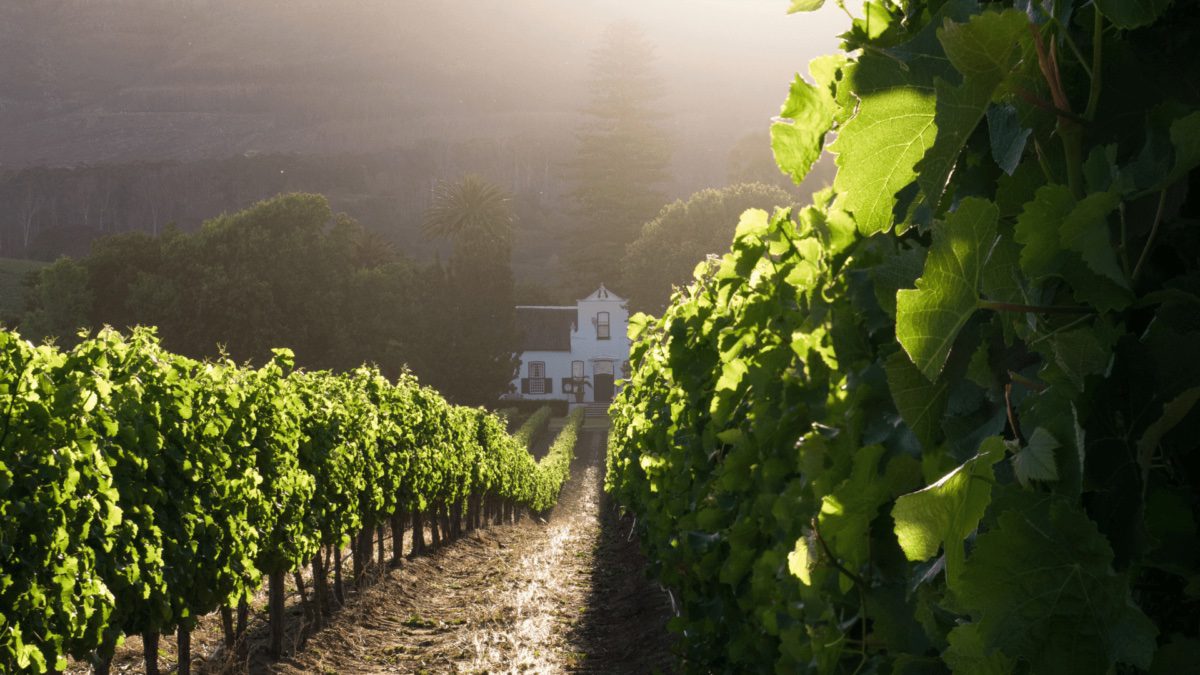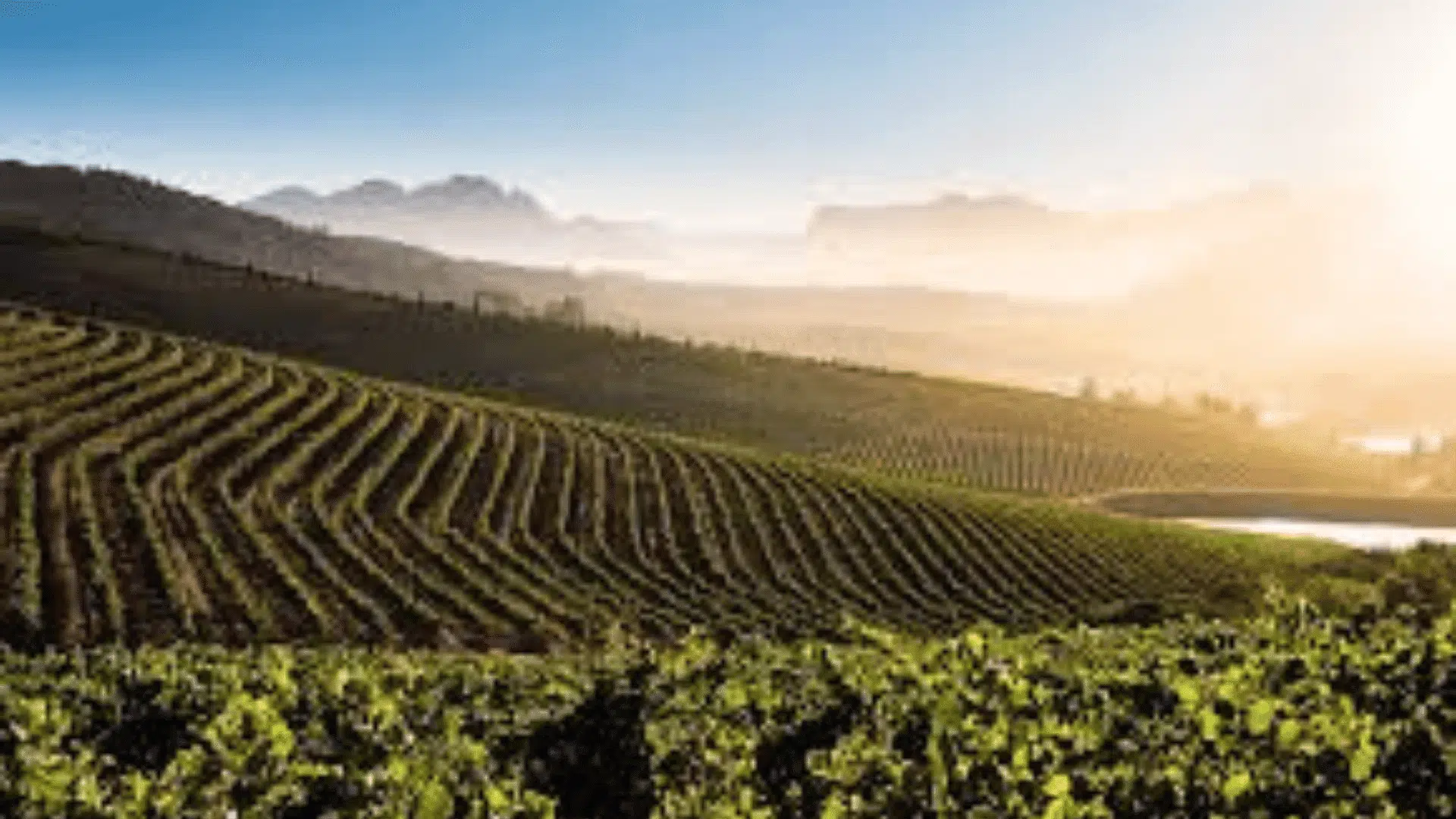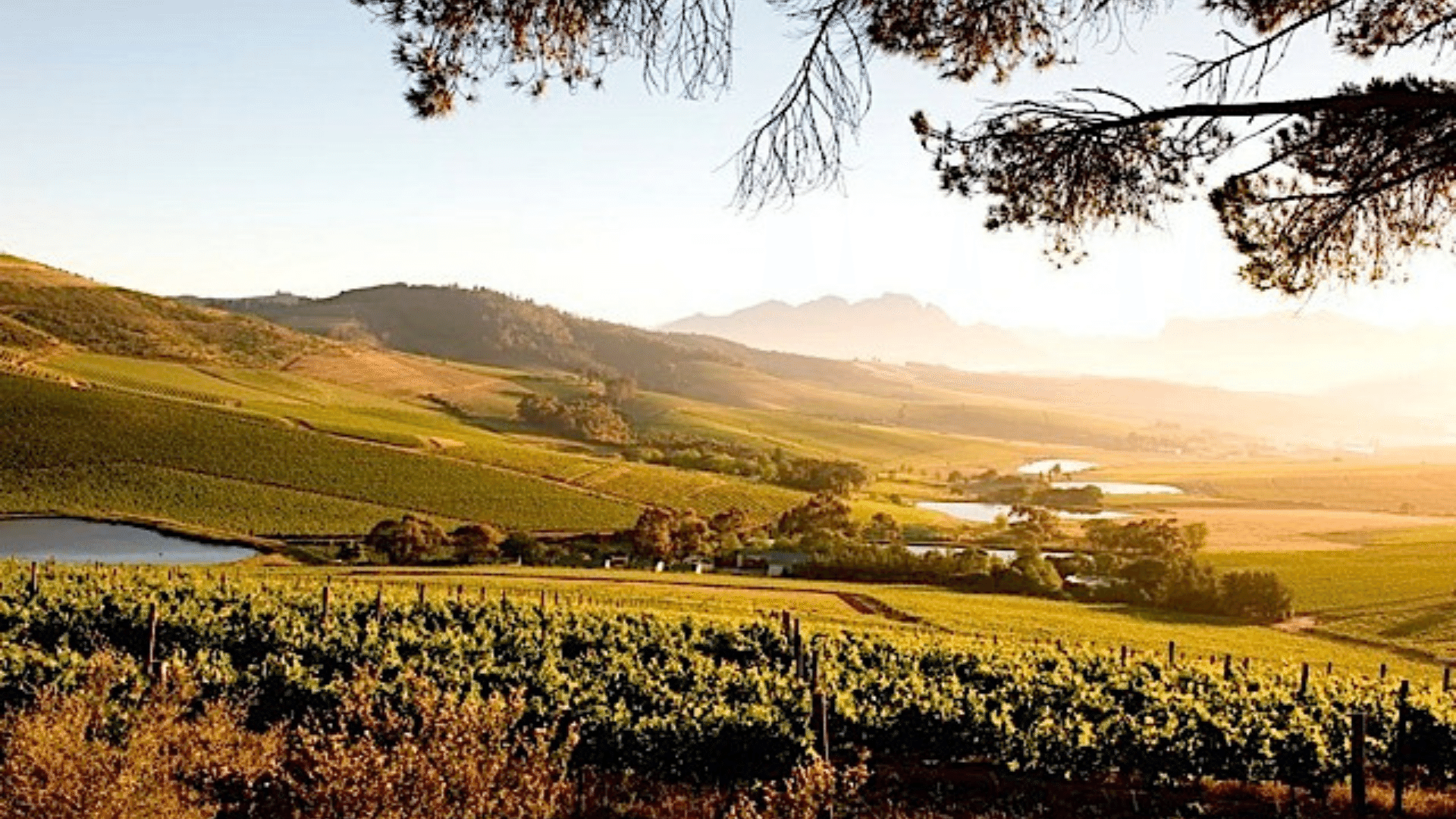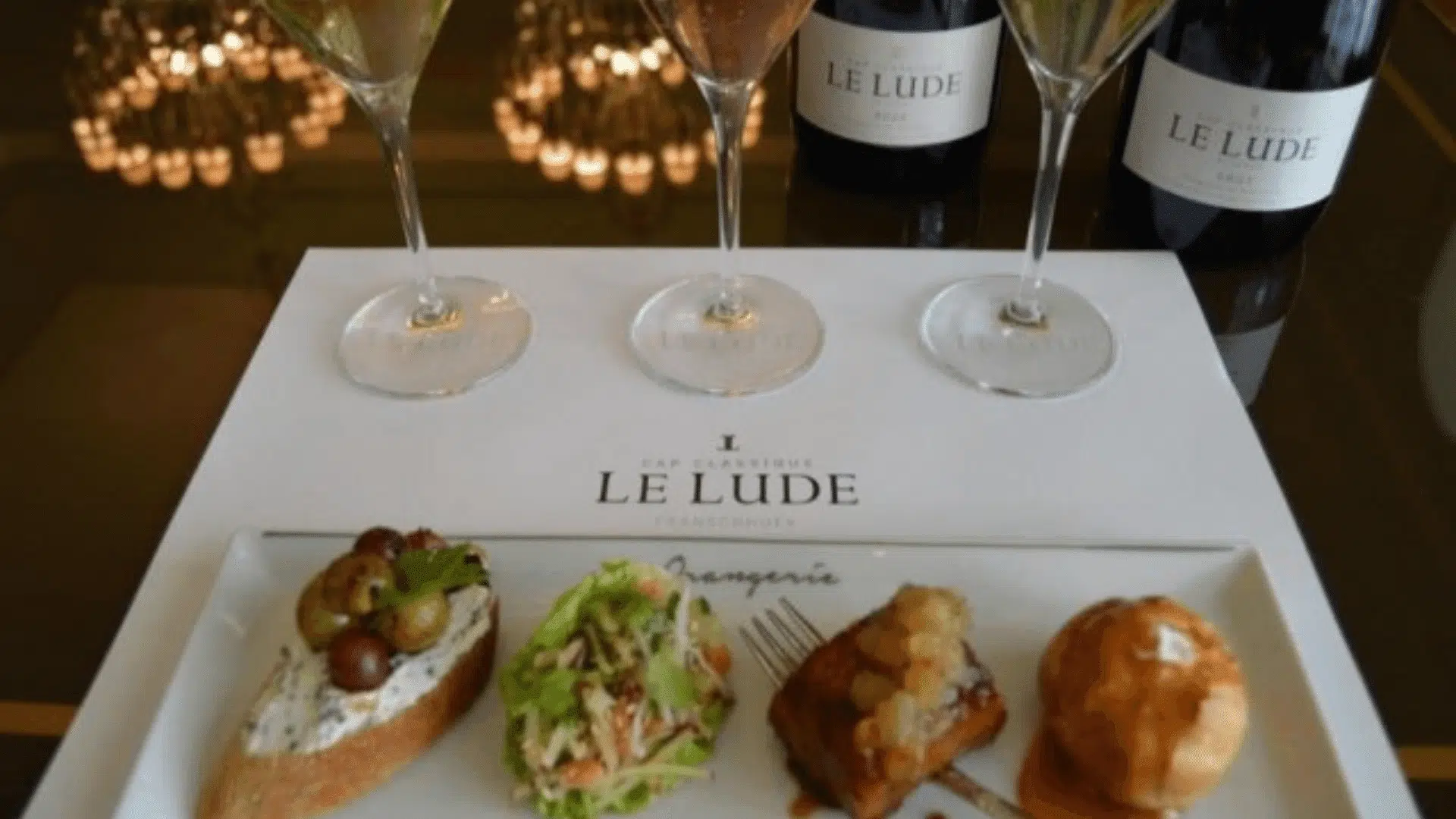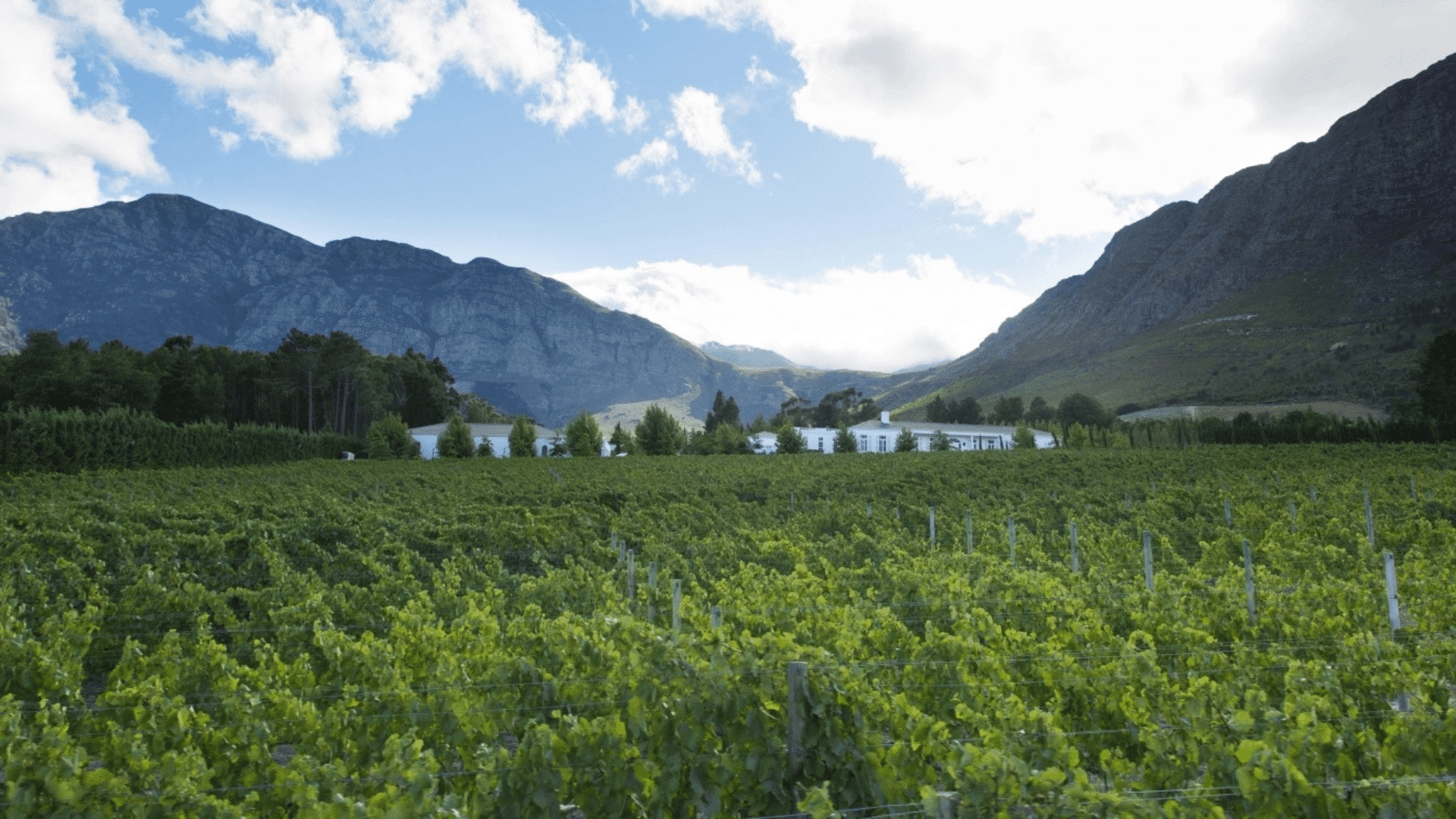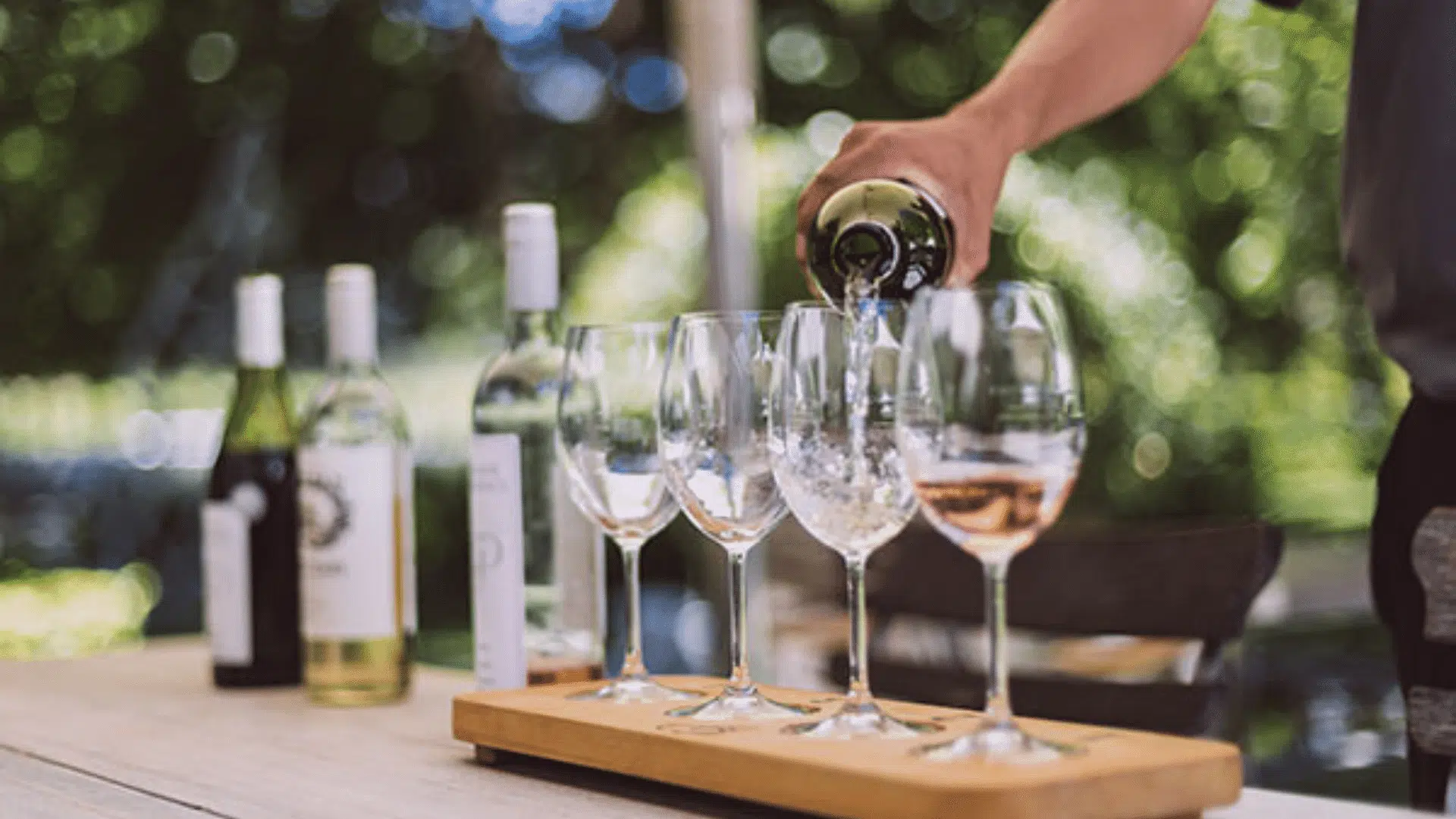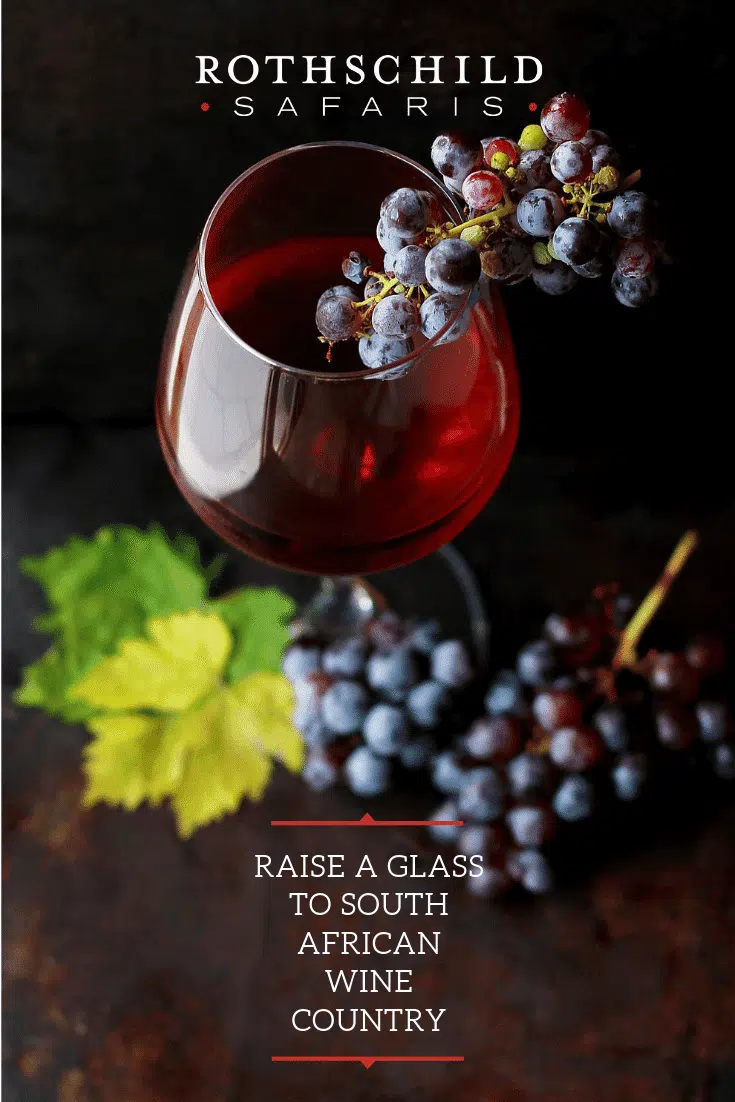 Let’s discover South African Wine Country…
Let’s discover South African Wine Country…
We begin with the history of South African wine
Should you ever find yourself lucky enough to swirl a splash of De Toren, The Black Lion around a crystal glass (at precisely 59 oF [15oC]), do spare a thought for both scurvy and fallacy.
Because scurvy and fallacy brought us the wonder that is South African wine country.
 © anyaberkut – stock.adobe.com
© anyaberkut – stock.adobe.com
A quick lesson in South African wine through the ages:
15th Century
When Bartolomeu Dias arrived in the Cape of Good Hope around the 15th Century, he did not spy much to his liking.
17th Century
It wasn’t until the early 17th century when the Dutch East India Company needed a midway point between the Netherlands and Asia that the southern tip of Africa got another look in. Dutch Surgeon Jan van Riebeeck was sent to build a fort and tasked with planting vineyards as soon as he arrived to ward off the dreaded disease as sailors continued on their spice route voyage. Luckily wine could solve almost any problem, including the fact that grapes were not a cure for vitamin C deficiencies.
The first cuttings arrived from Rheingau in 1654 packed in damp pieces of sailcloth and would never take route. The next year more cuttings came from Bohemia, the Canary Islands, France, Germany, and Spain. By 1659 the first South African wine was successfully produced from Muscat Blanc à Petits Grains.
Production was small, but over time the Dutch East India Company allowed freed company employees or vrijburghers to buy land and grow wine grapes for personal consumption.
Thirty years later Simon van der Stel, the newly appointed Governor, went against company regulations by illegally purchasing 1,900 acres (750 hectares) – roughly 15 times the amount of land allowed – to establish the world-renowned Constantia wine estate. Van der Stel’s attention to detail would make Constantia the first New World vineyard to enjoy international acclaim.
19th Century
The French oenologist André Jullien would include the Constantia wines in the highest category of his expansive 1816 quality classification, Topographie de Tous Les Vignobles Connus.
After the Edict of Fontainebleau French Huguenots flooded into the Cape Colony where they would eventually settle in the French Corner or Franschhoek Valley. The Huguenots combined their Old World wine philosophy with the New World’s technological advances, and their descendants continue to play a vital role in the South African wine industry.
The British consoled themselves over their loss of control over Aquitaine and Bordeaux four centuries earlier when they took over Rule of Southern Africa… and all its lovely wines. The British public enjoyed the reduced import duties, and they weren’t alone. Napoleon would request South African wine for his exile on St Helena, and the Americans traded slaves for famous South African wine. South African wine was thriving.
1859 marked the beginning of a fraught time for South African wines with oidium spreading through the Cape. Then the first modern trade agreement was struck between the Palmerston government and France. Known as the Cobden-Chevalier Treaty, it reduced the benefits of South African wine in favor of French wine exports and a devastating phylloxera epidemic in the late 19th Century resulted in vineyards being replanted with orchards, alfalfa fields, or high yielding grapes.
20th Century
During the early 1900s the glut of wine combined with a downturn in demand and World War I to result in many people pouring unsaleable wine into local water sources in South Africa. This was known as the ‘wine lake effect,’ and the South African government eventually stepped in to fund the formation of a cooperative known as the Koöperatieve Wijnbouwers Vereniging (KWV) van Zuid-Afrika Bpkt (KWV) in 1918.
The KWV soon set policies (including encouraging the production of brandy and fortified wines) and minimum prices for the wine industry in South Africa. By 1924 95% of all vineyard owners belonged to the KWV.
Stabilization would follow, but so did stagnation and the slow recovery combined with boycotts against Apartheid meant that South African wine did not make any impression on the world stage until the export market opened following the end of Apartheid.
Embracing the renaissance, winemakers pursued new viticultural and winemaking technologies. International winemakers arrived in South Africa, and the KWV was reorganized into private business, sparking even more innovation and better quality. A cooperative no longer, winemakers could not fall back on KWV fixing prices and buying excess grapes. Healthy competition favored quality wines.
In 1990 less than 30% of all the harvested grapes were used for wine production. By 2003 over 70% of grapes were destined for the wine bottle.
21st Century
A significant change took place within the South African wine industry in the 21st Century with black ownership and involvement steadily increasing. Mont Rochelle Mountain Winery became the first wholly black-owned winery in South Africa in 2001 (now proudly part of Sir Richard Branson’s hotel).
Another noteworthy addition to the South African wine scene over the last two decades? Rothschild Safaris guests started visiting the tip of the continent.
© Anna Om & Heiko – stock.adobe.com
South African Wine Country the Rothschild Safaris Way
All incredible safaris begin, not with a destination but with the travelers. We don’t specialize in bespoke because it is the most expensive. We understand that your time is precious, and your safari experiences cannot be hit and miss.
1. We are not about the Cape Town wine tours by bus circuit. No-one travels to the tip of Africa only to share the attention of a guide with a large group.
2. If you feel that wine is the answer regardless of life’s insistence on asking questions, then we will ask a top sommelier to accompany you on your travels throughout the South African wine country.
3. It is difficult to choose wisely when you are spoilt by choice, but we accept the responsibility bravely. These are our favorite wine experiences:
L’Ormarins on the Anthonij Rupert Wine Estate
The Reason
Maybe you don’t have much time or everyone in your group is not as fanatical about wine as you are. This is when it becomes crucial to fit as much as possible, as quickly as possible, into your visit. The Anthonij Rupert Wine Estate is an excellent one-stop-shop.
The Wine
The wine is terrific and enjoying a private wine tasting at L’Ormarins is an unforgettable experience.
Vineyards stretch along the slopes of the Groot Drakenstein mountains over granite soils that produce vigorous, articulate wines.
Syrah can be found on the warmer, northerly facing slopes. Merlot and Sauvignon Blanc are planted along the cooler eastern facing, higher altitudes. Cabernet Franc and Cabernet Sauvignon have been planted out of direct sunlight, and the Pinot Grigio blocks are on easterly or south-easterly facing slopes.
The Surprise
The Franschhoek Motor Museum at this estate is also a must-see South African venue. More than a century of automotive history is told through a collection of 220+ vehicles. It is difficult not to find yourself easing into motorhead mode here, and a vintage drive may forever change how you look at cars.
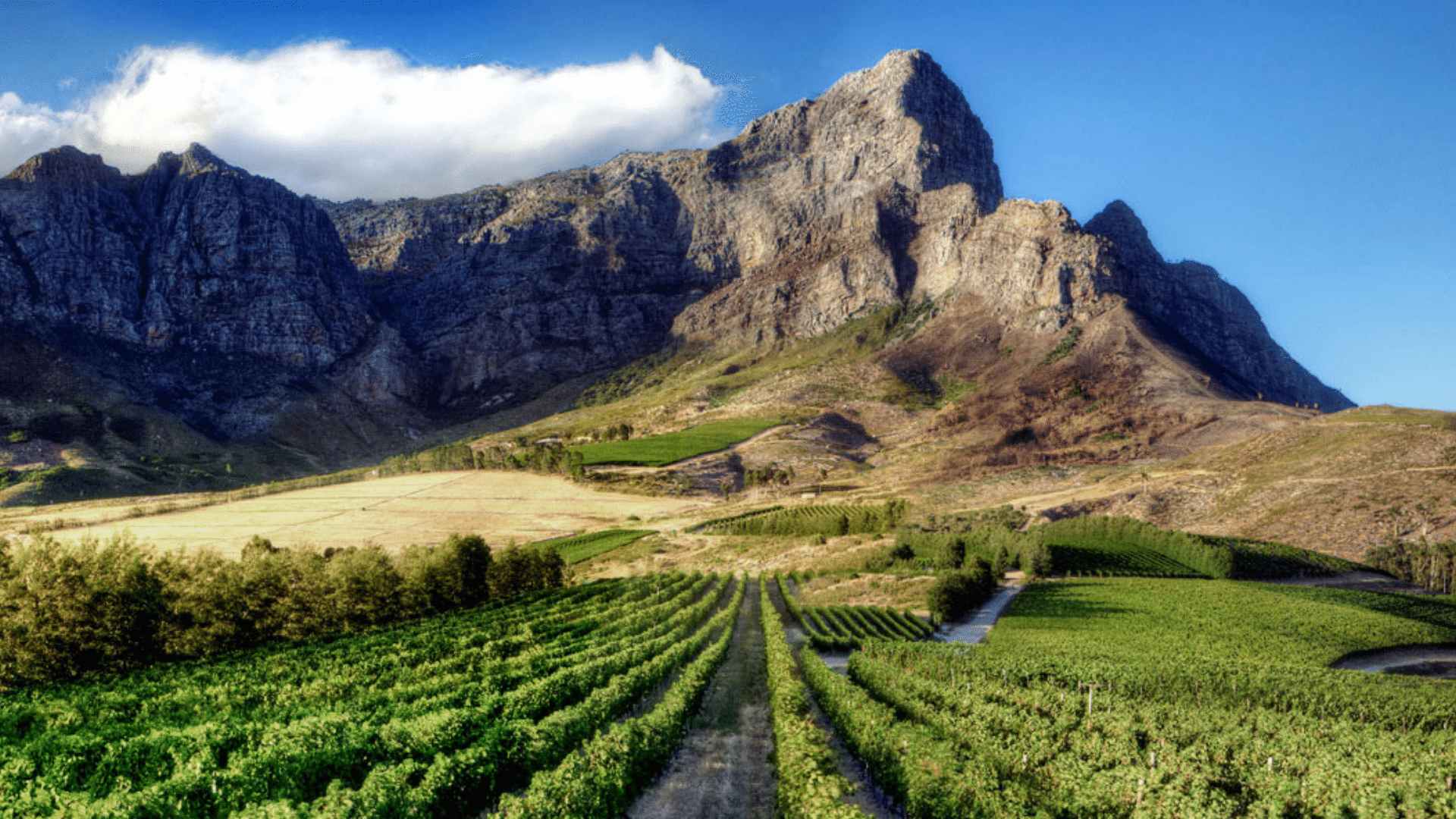 © Lormarins
© Lormarins
Jordan Estate
The reason
He is a geologist, and she is an economist. Together Gary and Kathy Jordan have been taking the wine world by storm since they began farming this top wine estate in 1993. The property is unique with slopes facing in every primary direction and vineyards lying at altitudes that range from 524 to 1,345 feet (160 to 410 m) above sea level. The Jordan philosophy combines these natural assets with innovative management.
The wine
Jordan wines are fiercely individual and combine the fruity accessibility of the New World with the classic elegance of old winemaking methods. Separate cellars filled with Bordeaux shaped barrels have been designed for Merlot, Cabernet Sauvignon and Shiraz in this cutting edge winery.
The surprise
Spectacular views of Table Mountain, False Bay, and Stellenbosch.
© Jordan
Cape Grace
The reason
Our relationship with the Cape Grace Hotel reaches back across two decades of traveling. Today, Rothschild Safaris guests are treated to hand-picked wine from the Cape Grace cellar where we keep a unique selection. If you want to indulge in wine tasting in Cape Town, the Cape Grace is where you should do it.
The wine
The indulgence stretches way beyond the best wines from South Africa. At the Cape Grace tasting is an experience that comes with splendid tasting menus, rare whiskey pairings, and indulgent Afternoon Teas.
The surprise
The Cape Grace is situated on a private quay between the V&A Waterfront and the yacht marina. There is no better place to soak up the essence of Cape Town living. While every room has beautiful views and every modern luxury, the history of Cape Town is present throughout the property; you are also surrounded by exquisite furniture, rare fabrics, intriguing artifacts, and original antiques. Proteas bring the botanical fynbos kingdom within touching distance between the work from local artists.

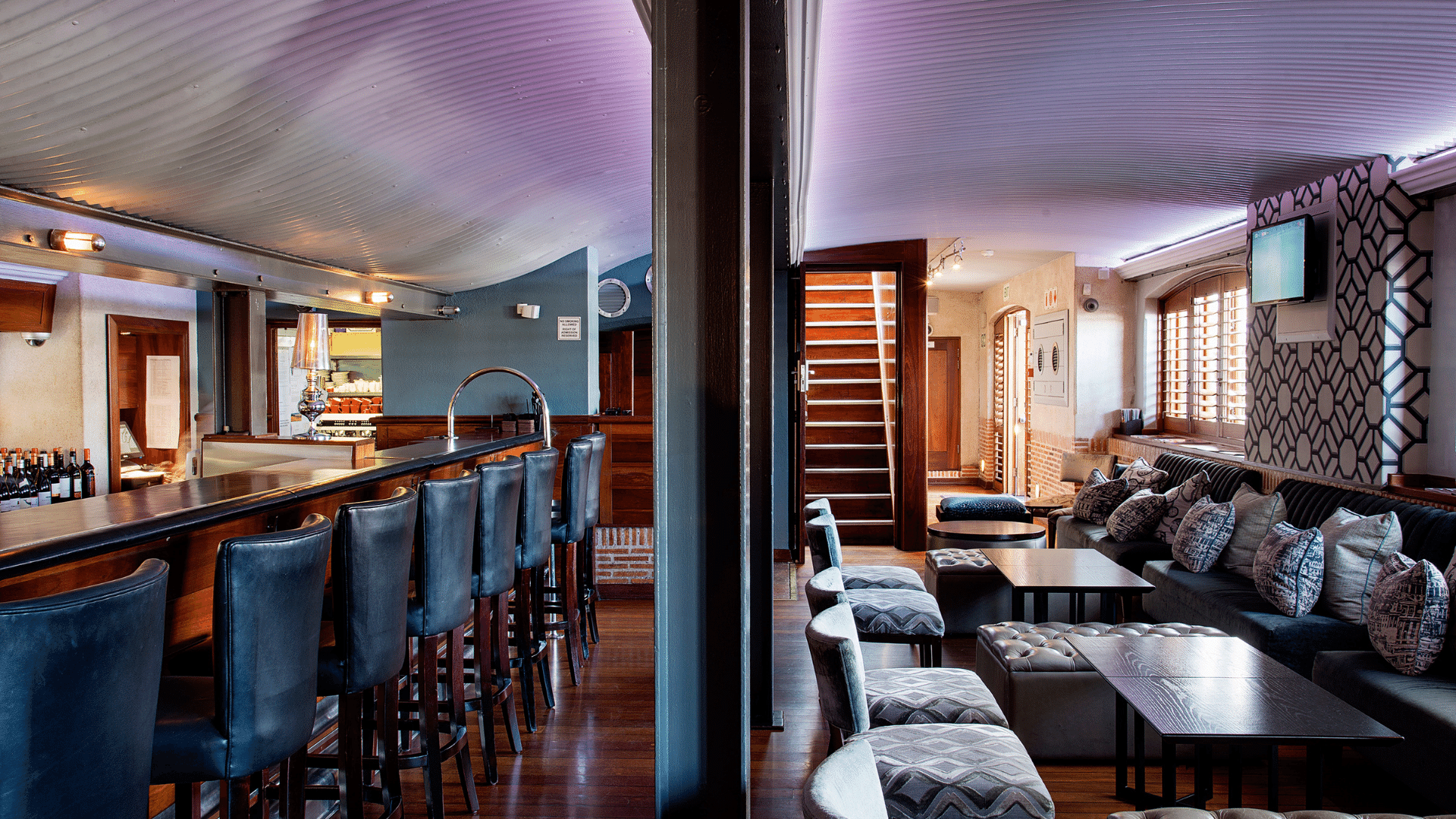 © Cape Grace
© Cape Grace
Le Lude Estate
The reason
Oops… did we buy bubbly instead of milk again?
The wine
Committed to the crafting of naturally bottle-fermented sparkling wines, the Barrow family specializes in Cap Classique. Le Lude produced the first Agrafe® (Tirage Liège) Cap Classique. Expect wines known for finesse, elegance, and refinement.
The surprise
Indulge in exquisite classical French cuisine, presented with a contemporary twist at Orangerie. The seasonal menu brings the finest ingredients from the surrounding forests, meadows, mountains, and oceans to cement Franschhoek forever in your memory.
© Le Lude
The Gallery at Grande Provence
The Reason
History is tangible at the 325-year old Grande Provence Estate. Here you are in the heartland of South African wine country.
The Wine
Grande Provence Estate features the double threat of award-winning food and wine talent. Prepare to pick up newfound knowledge and a tutored palate. Apart from wine pairing, you can also enjoy wine tasting and wine blending with a wine ambassador or a winemaker to produce your own unique style of wine.
The Surprise
Stay in The Owner’s Cottage
Four luxurious en-suite bedrooms and one deluxe suite provide luxurious, exclusive hospitality to a maximum of 10 guests with a spacious lounge, conservatory dining, swimming and spa pools with loggia.
Visit The Gallery
One of the most fêted galleries in all of the Cape, you have an excellent chance to see South Africa’s finest established and emerging artists here. They have regular exhibitions of all the major disciplines throughout the year, and The Gallery also showcases a selected group of artists from South Africa, Europe, and America.
Wander through the Sculpture Garden to admire an evolving collection of monumental works crafted from a variety of media.
The Only Wonderful Cape Town Wine Tour
Bus tours are not a great way to truly experience the essence of South Africa’s wine country. The Franschhoek Wine Tram, on the other hand, is an inspired idea for the young and the young at heart, and nothing like an en-mass Cape Town tour.
There are eight hop-on, hop-off lines visiting a selection of wine estates throughout the Franschhoek Valley.
Board the open-sided single-decker tram, the double-decker tram and the open-air tram-bus in Franschhoek Village to whizz around wine estates ranging from boutique to marquee estates. Every estate offers wine tastings, and several also boast world-class restaurants (reservations are essential).
You can collect wine along the way, and your host will keep it all for later collection at the end of the tour.
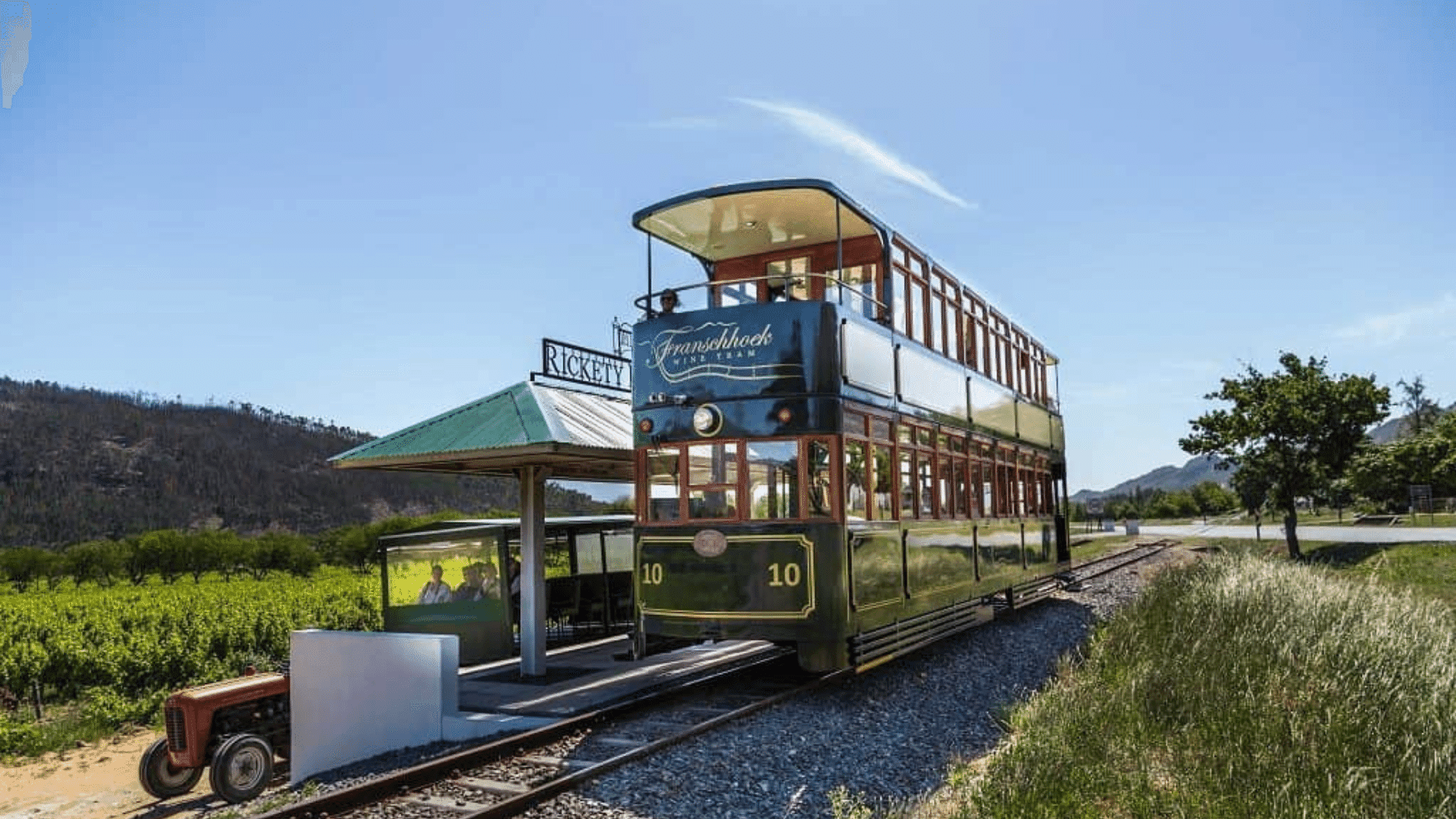 © Wine Tram
© Wine Tram
We all raise our glasses to the enjoyment of great wine on wonderful journeys and as Karen Blixen toasted in Out of Africa:
‘Rose lipped maidens, light-foot lads’


